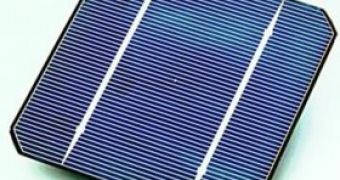A real breakthrough has been made by a team of scientists in the field of solar energy converters. The new discovery is a fuel cell that, for the first time, surpassed the 40% efficiency milestone, the highest efficiency achieved for any photovoltaic device.
Using a new technology that combines several innovations to a very high-performance crystalline silicon solar cell platform, a consortium led by the University of Delaware has achieved a record-breaking combined solar cell efficiency of 42.8 percent from sunlight at standard terrestrial conditions.
So far, the record was of 40.7% and was announced in December, so the new one is getting closer to the 50% efficiency goal set by the Defense Advanced Research Projects Agency (DARPA). Allen Barnett, principal investigator and UD professor of electrical and computer engineering, and Christiana Honsberg, co-principal investigator and associate professor of electrical and computer engineering, led the ground-breaking research.
"Many of us have been working with programs to take us to a real photovoltaic energy future. This project is already working in that future. DARPA has leapfrogged the 'conventional,' demonstrating that creativity and focus can significantly accelerate revolutionary research-bench concepts toward reality, demonstrating this does not have to take decades," Lawrence L. Kazmerski, director of the U.S. Department of Energy's National Center for Photovoltaics at the National Renewable Energy Laboratory in Golden, Colorado, said. "This is a first step-but a significant one in making sure our energy future is what we know it should look like."
The team's novel approach provides for affordability and also flexibility in the choice of materials and the integration of new technologies as they are developed.
The new technique will have immediate application in the high-technology military, which increasingly relies upon a variety of electronics for individual soldiers and the equipment that supports them. As well, it is hoped the solar cells will have a large number of commercial applications.

 14 DAY TRIAL //
14 DAY TRIAL //